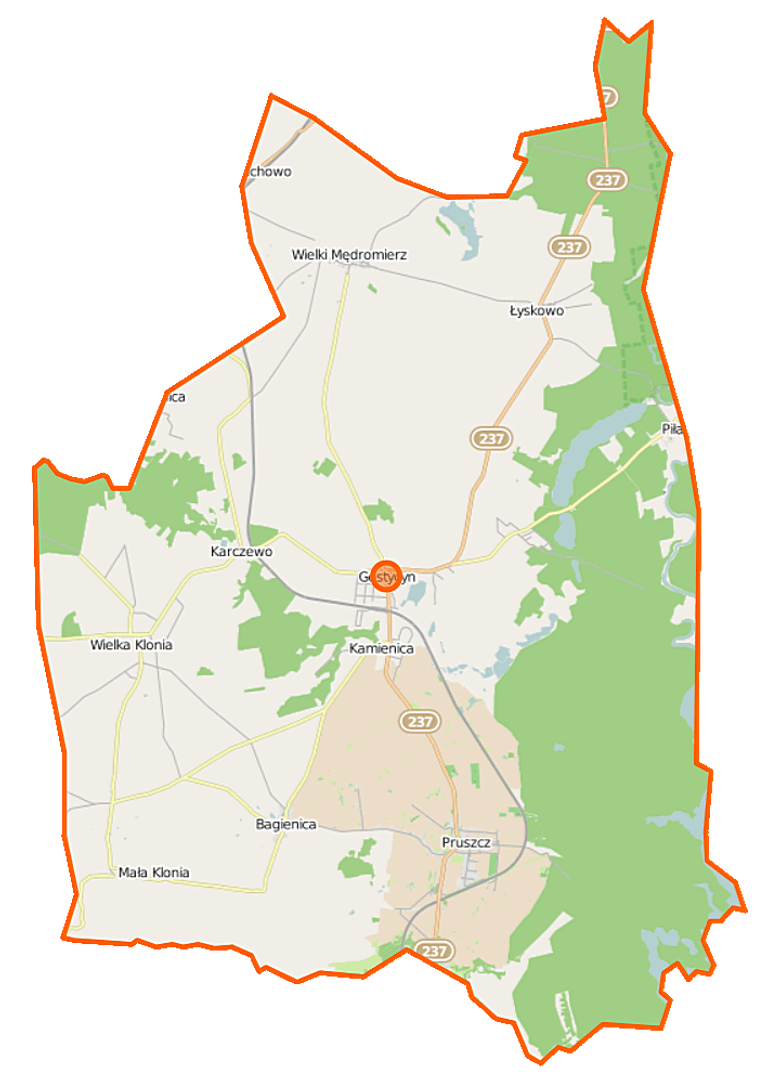Gostycyn
6.62

Overview
The Gostycyn Commune, located in the Kuyavian-Pomeranian Voivodeship in Tuchola County, is characterized by its rich history and diverse architectural assets. Its administrative seat is the town of Gostycyn. The commune covers an area of 136.15 km², of which 61% is agricultural land and 29% is forests. Within the commune's boundaries lies part of the Brda River Valley Nature Reserve, which highlights its natural attractions. Between 1975 and 1998, Gostycyn belonged to the Bydgoszcz Voivodeship. The commune's heritage includes many interesting sites, such as the Neoclassical Church of St. Martin from 1819, the 18th-century palace complex in Kamienica, and 19th-century manors and estates that speak to the region's former wealth. Among its settlements are villages such as Kamienica, Leontynowo, and Motyl, many of which have roots dating back to the Middle Ages. The commune also has a fascinating history, with a notable knightly influence, as evidenced by settlement documents bearing seals from the 14th century. Prominent figures associated with Gostycyn include Reinhold Heidenstein and Fr. Paweł Wojciech Nagórski. The commune has also been a center of social and cultural activity, including the presence of an evangelical community and the Order of the Servants of the Virgin Mary. An interesting historical note is that the first skirmish between Polish and German forces during World War II took place near Wielka Klonia. Gostycyn is also an important point on the tourist map, offering beautiful landscapes and opportunities to explore its rich past.
Location
2025 Wizytor | All Rights Reserved